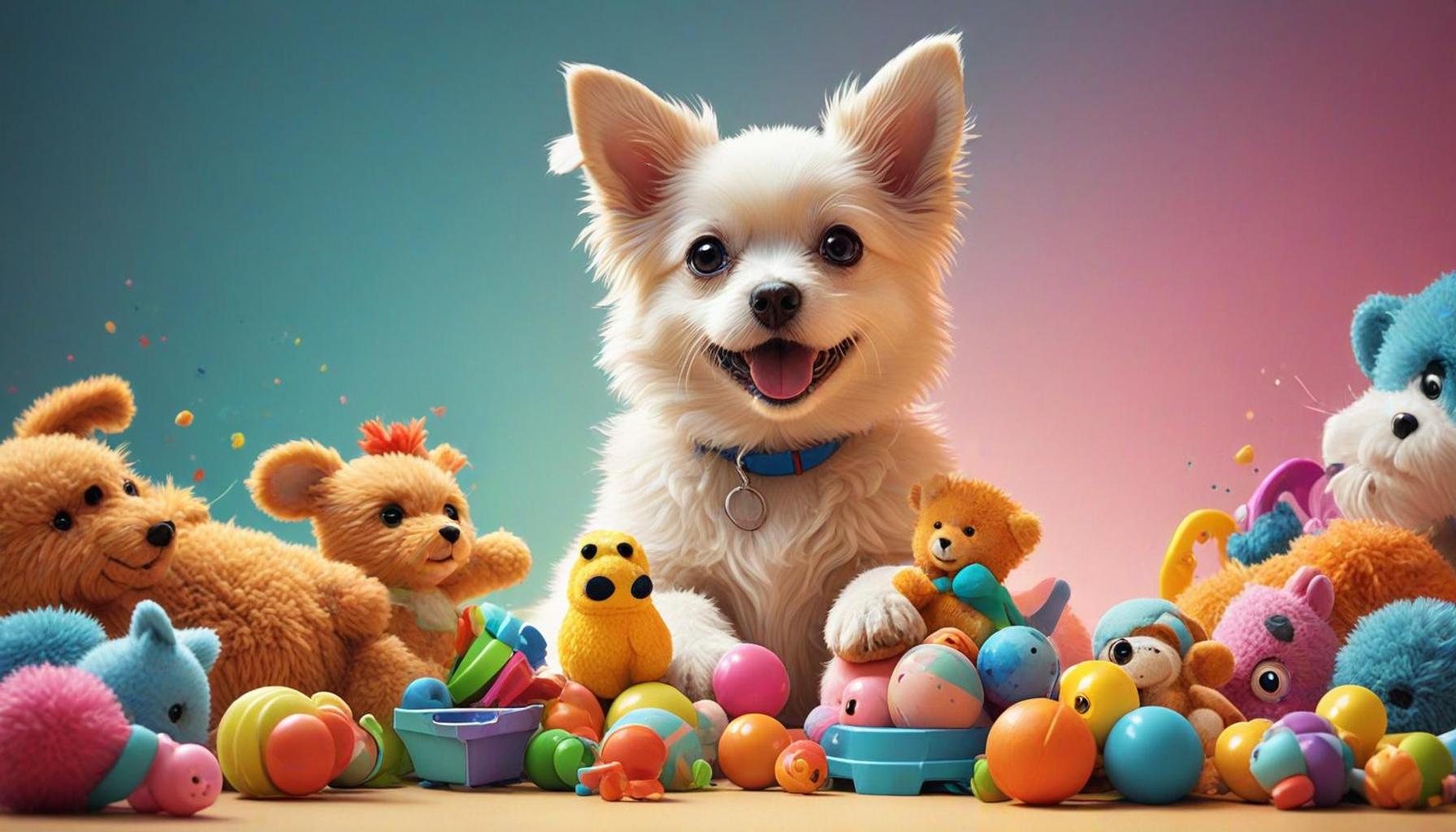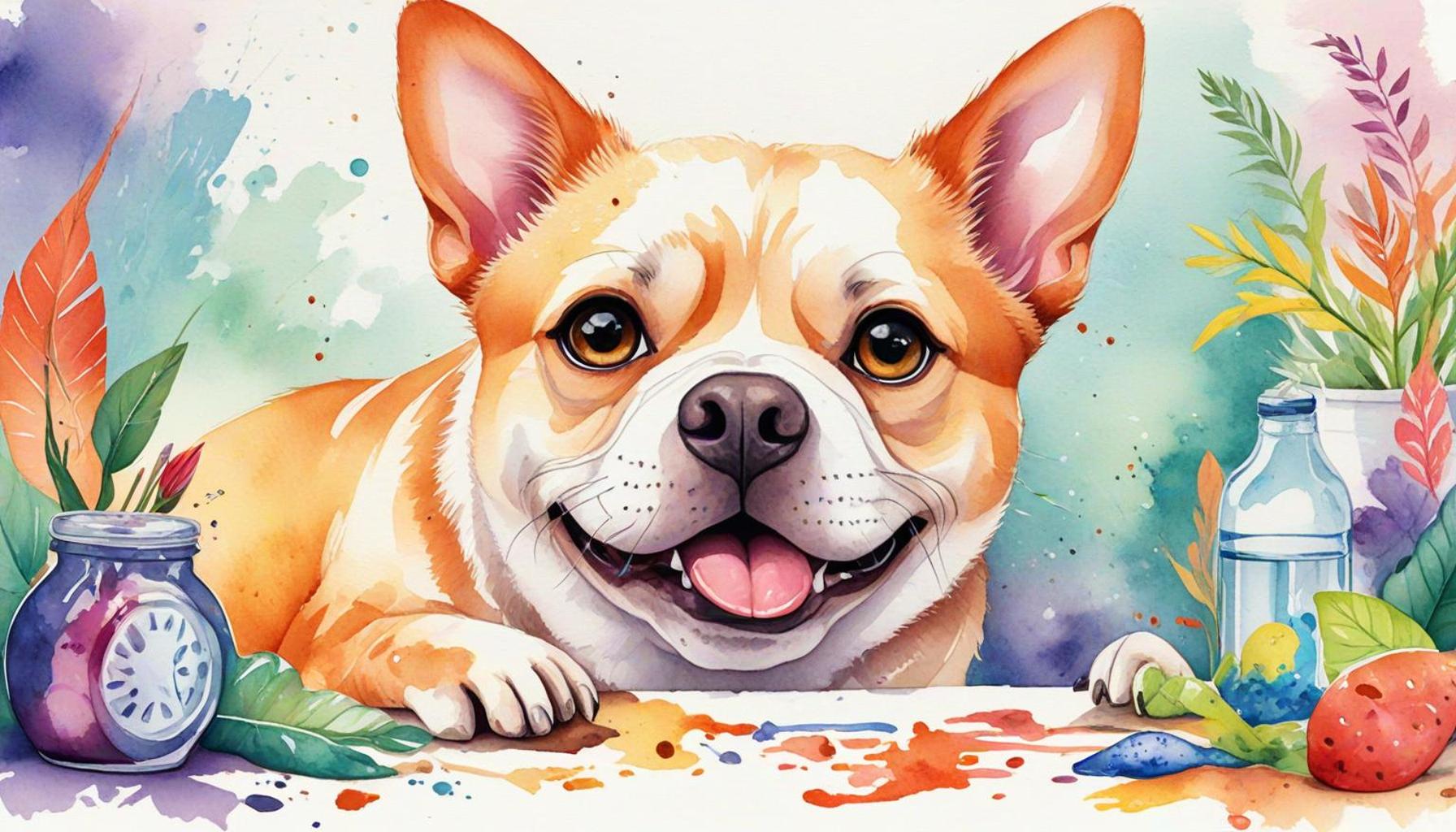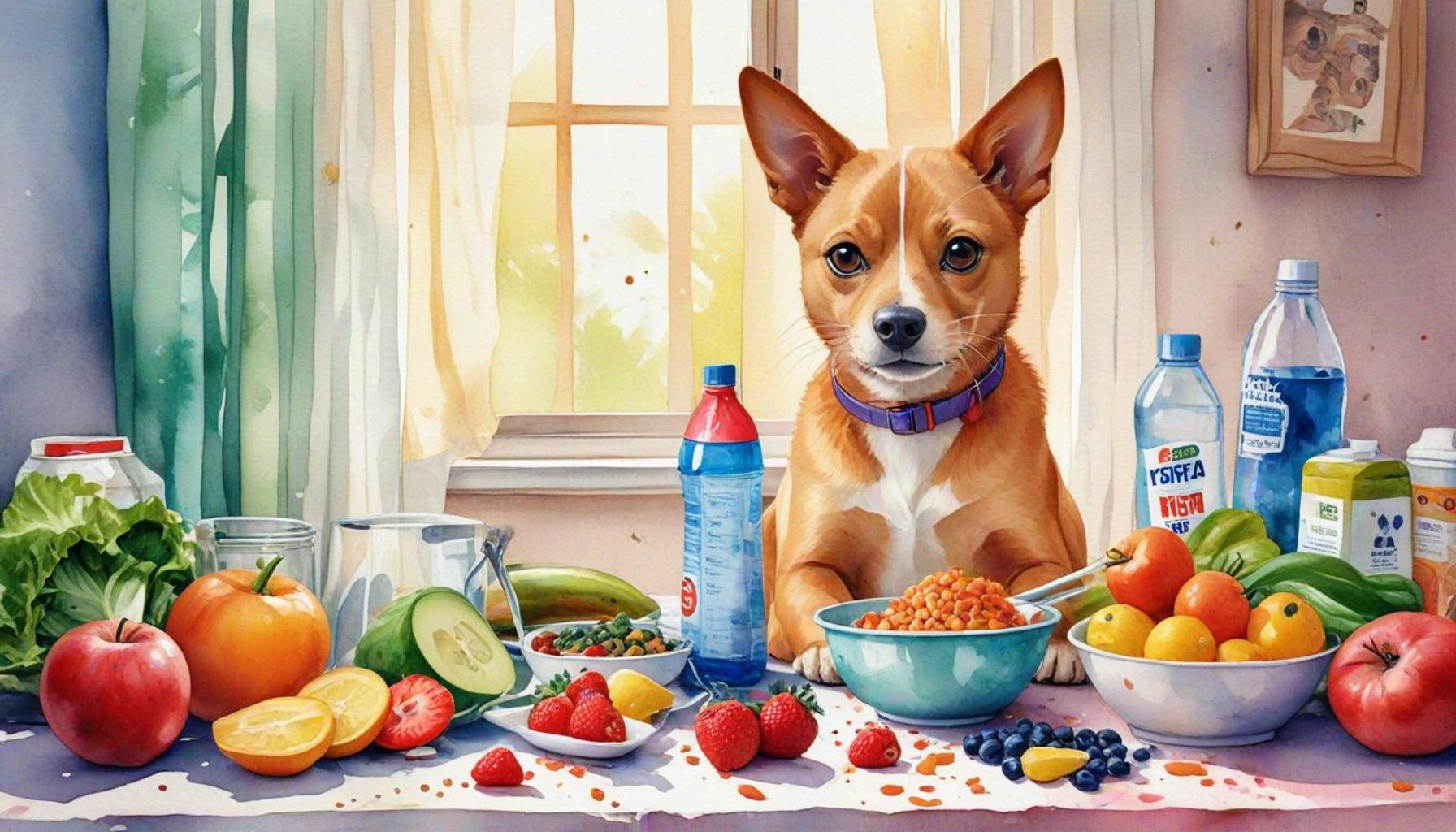Tips for Choosing Safe and Appropriate Toys for Your Pets

Selecting toys for your pets is an essential part of responsible pet ownership that often goes underestimated. It’s not just about keeping them amused, but also about ensuring their safety and meeting their developmental needs. With a dizzying array of products flooding the market, making thoughtful choices is crucial. Understanding key factors can help simplify this decision, creating enjoyable experiences for both you and your beloved animal companions.
Essential Considerations
When venturing into the world of pet toys, it is advisable to keep the following considerations at the forefront of your mind:
- Material Safety: Selecting toys made from non-toxic, durable materials is paramount. For instance, many toys made from rubber or organic fabric are less likely to pose health risks. Avoid toys that contain small parts or are easily chewable, as they can lead to choking hazards, especially for small dogs or puppies.
- Size: The size of the toy is another critical element to consider. For example, a large plush toy might be amusing to a Great Dane but could present a choking hazard for a Chihuahua. It is advisable to choose toys that are not only proportionate to your pet’s size but also to their generally aggressive chewing habits.
- Activity Level: Know your pet’s personality. Active pets, like a Labrador Retriever, may thrive with interactive toys, while more laid-back pets might prefer soft toys for cuddling. Based on their energy levels, you can also find puzzle toys that challenge them mentally, promoting cognitive stimulation and reducing boredom.
Local Insights
In Nigeria, you might encounter challenges in sourcing quality pet toys due to varying levels of availability and quality standards. Therefore, it is essential to:
- Seek reputable local brands that focus on pet safety and durability. Check labels for certifications or any safety marks that assure quality.
- Explore handmade options available in local markets, as they often utilize organic materials safer for pets. Artisans may offer unique creations that not only keep your poppets entertained but also support local businesses.
- Engage with local pet communities, both online and in person. Social media platforms and pet fairs can be excellent venues for gaining insights and recommendations for trusted toy brands and materials.
Taking these steps will help ensure that your playful friends not only have toys to keep them entertained but also tools that foster their health, wellness, and development. It’s worth noting that the right toys can significantly enhance a pet’s quality of life, leading to less destructive behavior and happier pets overall.
Ultimately, by diving deeper into understanding available options and the specific needs of your furry friends, you’ll be well-equipped to make informed and thoughtful choices that will ultimately enrich their lives.
YOU MAY ALSO LIKE: Read read another article
Understanding Your Pet’s Needs
It’s crucial to recognize that pets, much like humans, have distinct preferences and needs when it comes to toys. Understanding these differences can guide your choices significantly. For example, dogs have varying breeds that show different chewing tendencies, while cats often have intrinsic hunting instincts that drive their play behavior. Paying attention to these characteristics will not only enhance your pet’s playtime but also promote their physical and mental well-being.
- Behavioral Traits: Observe how your pet interacts with their environment. A curious kitten may require toys that mimic prey, such as feather wands or small balls that scatter easily. In contrast, dogs that tire quickly might enjoy toys that encourage less strenuous play, like plush toys that can be carried around and cuddled.
- Safety Regulations: Always check for compliance with safety regulations when selecting toys. In Nigeria, quality control can be inconsistent; therefore, scrutinizing the toys for durability and the absence of harmful chemicals is vital. Look for toys that have a certification statement or safety mark, showcasing adherence to safety standards, ensuring they are safe for your furry friends.
- Durability and Lifespan: Invest in toys that are built to withstand the chewing and clawing of your pets. Look for heavier fabrics, durable rubber, or specially designed chew toys that can endure the test of time. The longer a toy lasts, the more value it brings to you and your pet’s playtime.
Interactivity and Engagement
Another essential aspect of choosing the right toys is ensuring they promote interactivity and keep pets engaged. Toys that require active participation encourage bonding and can lead to a more enriched life for your pets. Here are some ideas:
- Interactive Feeders: These toys can challenge your pet’s problem-solving abilities while rewarding them with treats. They are especially helpful for pets that tend to eat too quickly, aiding in digestion as well.
- Behavioral Toys: These can aid in addressing behavioral issues caused by boredom and excess energy. Toys that incorporate sound, movement, or treat dispensing can redirect negative behaviors into positive playtime.
- Social Toys: Consider multi-user toys that allow for interaction between pets and their humans. Fetch and tug-of-war games foster play and strengthen the bond between you and your pet.
By keeping behavioral traits and interaction levels in mind, you create an environment that is not only fun but also safe and healthy for your pets. Remember, selecting the right toys is not merely a purchasing decision but rather a commitment to their happiness and well-being.
Tips for Choosing Safe and Appropriate Toys for Your Pets
When it comes to ensuring your pet’s playtime is safe and enjoyable, the selection of toys plays a pivotal role. The market is overflowing with options, but not all are equally suitable for every pet. It is essential to consider your pet’s size, chewing habits, and safety when choosing toys.First and foremost, consider the material of the toy. Toys made from durable, non-toxic materials are key in preventing chemical exposure and ingestion. Look for toys that are specifically labeled as safe for pets, as regulatory standards ensure these products are held to high safety norms. Using products designed for your pet’s specific needs ensures their playtime is both enjoyable and safe.Additionally, always assess the toy’s size. A toy that is too small may pose a choking hazard, while one that is too large may not stimulate your pet’s play instincts effectively. Larger dogs typically require sturdier toys that can withstand their strength, whereas smaller breeds may thrive with lightweight, easy-to-handle options. Moreover, consider your pet’s behavior traits. Pets that are aggressive chewers require extra-durable toys made from tougher materials. On the contrary, softer toys can be suitable for gentler chewers, providing them comfort and engagement without risk. Interactive toys, like puzzle feeders, stimulate your pet’s mind, encouraging cognitive development while also making playtime a rewarding experience.Before making a purchase, read the labels and reviews to ensure the quality and safety of the toy. Researching recalls or safety warnings related to specific brands or types of toys can prevent unfortunate incidents.Ultimately, investing time in choosing the right toys will make playtime not only safer but also more fulfilling for your furry friend. With the right guidance, pet owners can enhance their pets’ experience and ensure they enjoy their toys to the fullest.
| Category | Details |
|---|---|
| Material Safety | Non-toxic, durable options prevent chemical exposure. |
| Size Appropriateness | Prevent choking hazards by choosing the correct size for your pet. |
In summary, applying these tips will contribute significantly to ensuring that your pet’s playtime is both safe and enjoyable. Always approach the selection process intelligently, and your furry friend will thank you through their playful antics.
YOU MAY ALSO LIKE: Read read another article
Consideration of Material Types
An important factor in choosing safe and appropriate toys for your pets is the material from which they are made. Different materials come with varying degrees of safety and suitability for your furry friends, and understanding these can significantly influence your purchasing decisions. Here are some common materials and what to look for:
- Natural Rubber: Rubber toys are excellent for both dogs and cats, as they are durable and can withstand rough play. However, ensure the rubber is natural and free from harmful additives, as synthetic rubber often contains toxic substances.
- Fabric and Plush Materials: Many pets enjoy soft plush toys that can be cuddled and carried around. When opting for this type of toy, check that the fabric is non-toxic and securely stitched. Be wary of any small parts that could be chewed off and pose a choking hazard, particularly for energetic or aggressive chewers.
- Hard Plastics: While hard plastic toys can be long-lasting and easy to clean, they can sometimes splinter or break, posing a risk to your pet. Look for toys labeled as “pet-safe” and those designed specifically for the chewing strength of your pet’s breed.
- Natural Wood: Toys made from untreated hardwood can be a safe choice for many pets, especially rodents and some birds. Ensure that these toys are wood that is free from any toxic paints or finishes and come from reputable sources.
Assessing the Size and Shape
The size and shape of a toy are critical aspects that can impact safety and playability. Choosing the right size is essential to prevent choking hazards and to ensure your pet can engage fully with their toys.
- Proportionate Sizing: For example, when selecting toys for dogs, choose toys that are appropriately sized for their mouth. A toy that is too small can easily be swallowed, while one that is too large may discourage play. For cats, toys should be lightweight and easy to bat around, encouraging their natural instincts.
- Round vs. Flat: Round-shaped toys may be harder to fetch for some pets, whereas larger, flat toys may be easier to carry. Consider your pet’s play behavior. A ball that rolls unpredictably might captivate some pets but frustrate others. Look for toys that fit well with their playful nature.
- Texture Variety: Incorporating toys with various textures can keep your pets intrigued and satisfied. A combination of soft and hard elements can provide different tactile experiences that engage their senses and keep them entertained for longer periods of time.
Understanding the importance of material types and assessing the appropriate size and shape will not only help you choose safe and appropriate toys for your pets but will also enhance their playtime experience significantly. By taking these factors into consideration, you are ensuring a vibrant and enriching environment for your beloved companions.
ADDITIONAL INSIGHTS: Expand your understanding here
Conclusion
In conclusion, choosing safe and appropriate toys for your pets is a vital aspect of responsible pet ownership. Prioritizing material safety and size suitability can dramatically enrich your pets’ playtime while minimizing potential hazards. Remember that the right toys not only stimulate your furry friends but also contribute to their physical and mental well-being. When shopping for toys, consider the durability of materials such as natural rubber and avoid cheap, hazardous alternatives. Your local market may offer a variety of options that align with these criteria, ensuring both safety and enjoyment.
Moreover, as you assess toys, think about your pet’s unique play style and preferences. Does your dog enjoy tugging and fetching, or does your cat love hunting for hidden treasures? Tailoring toy selections to fit their behaviors will further enhance their engagement and satisfaction. Take the time to read product labels and reviews to identify toys specifically designed for your pet’s breed and activity level. This diligence will not only avert dangers but also foster long-lasting memories of play and bonding.
Ultimately, investing in appropriate toys contributes significantly to your pet’s happiness and health. With the insights shared in this article, you’re now equipped to navigate the pet toy aisle like a pro, making informed choices that prioritize your beloved companions’ safety. Keep exploring and learning, as the world of pet care is ever-evolving and brimming with new discoveries!


